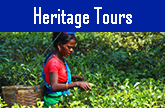Dree Festival Tour
Tour Duration : 6 Nights / 7 Days
Travel Season : July
dree festival tour itinerary:
02 July: Day 01: Tezpur - Itanagar (160 kms, 4 hrs drive)
Meet upon arrival at Tezpur Airport and take transfer to Itanagar.
Naagsankar Temple:
There are many beliefs prevailing regarding the history of Naagsankar temple, a famous Shiva shrine located near Chotia. According to mythology, the powerful King Naagmatta (another name Arimatta), believed to be the son of river God Brahmaputra built the Naagsankar temple. Another belief states that King Naagsankar of Lohitya dynasty who ruled ancient Assam in 378 A.D. built this temple around 4th A.D. The renovation of the temple took place under the reign of Ahom King Su-Seng-Pha in 1480. The main attraction of the temple is a large pond adjacent to it inhabited by a wide variety of rare species of turtles and local fishes. Some turtles are believed to be around 100 years old. Being a Shiva shrine, Shivaratri is celebrated with great pomp and joy in this temple.
If permission granted, visit -
Tea Factory:
Visit a bought-leaf tea factory and witness processing of globally acclaimed Assam tea.
Later, visit on the way -
Monabari Tea Estate:
Monabarie Tea Estate in Biswanath Chariali District of Assam is the World Biggest Tea Garden and Asia's Largest Tea Estate.The tea estate is owned by the McLeod Russel India Limited, a part of Williamson Magor Group.The Tea Garden Covers the Tea plantation area of 1158 hectares out of 1400 hectare of the total granted area. This tea garden produced 3150 tons crop per year. The Tea garden's workforce population is 2718.The Tea garden Manufactures 100% CTC Tea with 'Reddish Bright ' Quality. (Tip : Stop for a while and have some clicks posing in the tea plantations.)
Later, arrive at Itanagar and check-in at hotel.
Itanagar:
The historic capital city of Arunachal Pradesh, Itanagar stands on the dawn lit Himalayan foothills. A home to the Nyishi tribes, this town is located in the very midst of the state surrounded by traditional and modern wood-crafted tribal houses. Itanagar fascinates tourists to its rich archaeological and religious sites and its magnificent display of tribal arts, crafts and textiles.
In Itanagar, visit -
Ita Fort:
This ‘fort of bricks’ is located at the midst of the Itanagar town. The construction of this fort dates back to 1360 to 1550 A.D. during the rule of the Jitari dynasty. The structure of this fort is not regular in arrangement. This huge fort was built with more than 80lakhs of bricks and 45 centimeters of stone. The length of the complete brickwork of the fort is estimated to be about 16,200 cubic meters. It consists of three entrance gates on its eastern, western and southern sides.
Ganga Lake:
Locally named as ‘Gekar Sinyi’, this natural lake is a delightful spot for picnic and boating experiences. It surrounds an area about 4 sq. km. and is a home to a number of birds. Standing on the foothills of the Himalayan range, the lake is encompassed by forests full of bamboo and fern trees, orchids and different types of vegetation.
Overnight: Stay in hotel.
03 July: Day 02: Itanagar - Ziro (110 kms, 4 hrs drive)
In the morning after breakfast, visit in Itanagar -
Buddhist temple:
The Buddhist temple is set within the premises of magnificent gardens located atop on a hill. The yellow roof of the temple displays a Tibetan touch along with a stupa established in front of the shrine. A tree planted by Dalai Lama beside this beautiful temple reflects his holy presence over the entire place.
Jawaharlal Nehru State Museum:
The Jawaharlal Nehru State Museum reflects the rich tribal heritage of Arunachal Pradesh. It displays various handicrafts and archaeological remains, textiles, musical instruments, wood carvings, weapons of the past ages. It showcases a unique collection of ancient art and craft, jewellery, variety of tribal headgears etc. A library and a handicraft workshop centre dealing in traditional cane manufacture are also present here.
Later, drive to Ziro.
Ziro:
A remarkable plateau and the abode of the Apatani people, Ziro set at a high altitude is renowned for its pine and bamboo grooves, Tarin, the high altitude fish farm, exotic landscape with a delightful view of sunrise from the hilltops, tribal culture and a centre of crafts such as cane and bamboo products. It is a perfect spot for adventure enthusiasts, offering endless experience for trekkers and hikers.
Arrive at Ziro and check-in hotel.
Overnight: Stay in hotel.
04 July: Day 03: Ziro
In the morning after breakfast, visit at Ziro -
Apatani tribal villages:
Hong, Hari, Hija, Duta, Bula, Tajang, Bamin Michi and Mudang Tage are eight distinctive Apatani villages situated at Ziro valley. Visit Hong village, the largest village of Apatani plateau and other Apatani villages as well. There are more than 5,000 people living in 700 houses at Hong village. In every village, there are some male community halls called 'Lapang'. Apatani people are famous for tattoo on their forehead and nose plug. Basically, Apatani people are animist who worship all natural gods. Donyi-Polo, i.e, the Sun and Moon is their supreme God. Apatani people are known for paddy cum pisciculture. They celebrate Myoko festival in the month of March for the welfare of their community and Dree festival in July for bountiful harvest, community well being and to keep away the pest.
Shiva Lingam:
The calm hills of Kardo hold one of the largest Shivalinga with a height measuring 25 feet and 22 feet in circumference. The Shivalinga excavated in the recent past is located near Hapoli town.
District Museum:
The District Museum at Zero exhibits a variety of handicrafts and textiles, musical instruments, weapons of the past ages used by different tribes and sub-tribes of Arunachal Pradesh. It displays an exclusive collection of art and craft, jewellery, variety of tribal headgears etc reflecting the traditions of ancient tribal culture.
Craft Center:
Craft Center showcases the unique crafts and handloom products of the Apatani tribe. A wide selection of craftsmanship is displayed in carpet weaving (woolen carpets) and traditional cloths exhibiting a tribal influence.
Regional High Altitude Fish Seed Farm:
Regional High Altitude Fish Seed Farm located at Tarin is a unique reflection of paddy and fish cultivation practiced by the Apatani tribe. The cultivation is carried out encompassing an area of 200 kilometers in Kamala valley. Tourists flock in this high altitude farm to view the distinctive farming covered by pine and bamboo grooves.
Overnight: Stay in hotel.
05 July: Day 04: Ziro (Dree festival celebration)
In the morning after breakfast, enjoy Dree festival at Ziro -
Dree Festival:
Dree festival is celebrated within the Apatani tribal community during the growing season of corps. In the Apatani language, the word 'Dree' means “a man who either borrows or purchases food grains from other people in order to curtail the scarcity by adding to his old stock of food grains.” During the celebration, a few rituals are carried out to worship divine Gods like Tamu, Metii, Danyi- Polo (the Sun and Moon) etc. collectively known as 'Dree Wuhi' (Gods) by offering sacrifices of mithuns, cows, pigs and fowls so that they will protect the crops and bless all to prosper in life. The festival is observed on 5th July every year.
Evening: Free at relaxation. Overnight: Stay in hotel.
06 July: Day 05: Ziro - North Lakhimpur (133 kms, 4 hrs 30 mins drive)
In the early morning after breakfast, take transfer to North Lakhimpur.
North Lakhimpur:
Arrive at North Lakhimpur town and check-in at hotel.
Overnight: Stay in hotel.
07 July: Day 06: North Lakhimpur departure
In the morning after breakfast, take transfer to North Lakhimpur airport for your onward destination.
Tour terminates here
North East India Tourism
Package Inclusions:
# All ground transportation by a dedicated and exclusive vehicle driven by our experienced and friendly driver
Package Exclusions:
# Any air fare or train fare


















